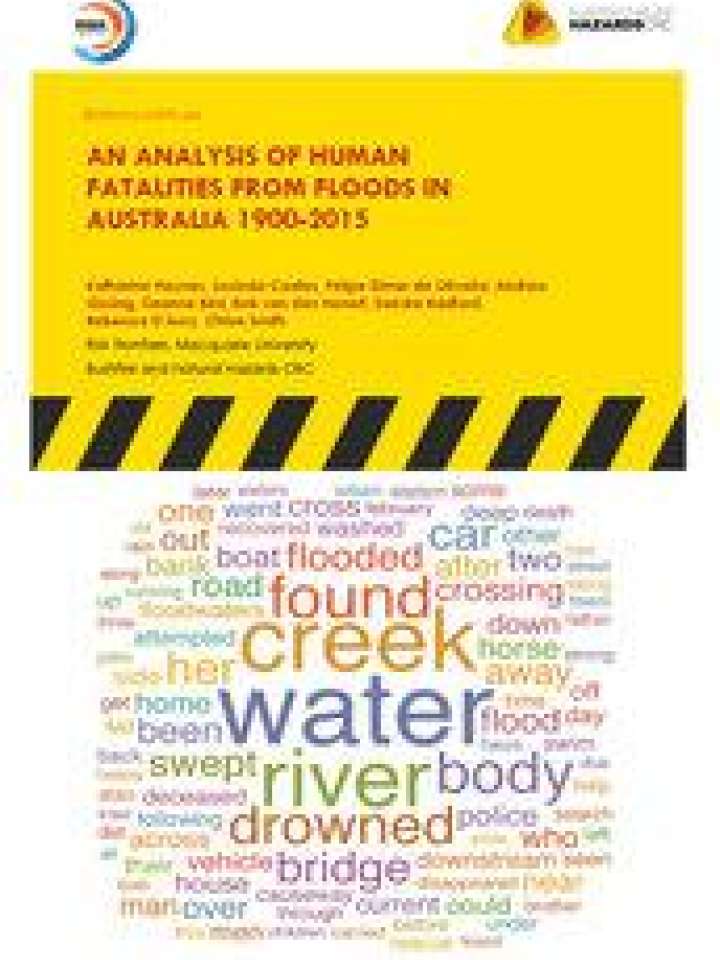An analysis of human fatalities from flood hazards in Australia, 1900-1915
This report examines the socio-demographic and environmental circumstances surrounding flood fatalities in Australia between 1900 and 2015. The data has been analysed in relation to informing the understanding of the circumstances surrounding the deaths and how this information could best be utilised for emergency management policy and practice. It is the first major milestone from the Bushfire and Natural Hazards Cooperative Research Centre funded project “An analysis of human fatalities and building losses from natural disasters in Australia”.
The foundation for this work is the use of the Risk Frontiers’ database PerilAUS, which contains historical data on the incidence (magnitude, affected locations, etc.) and consequences (property damage and fatalities, etc.) of natural hazard events in Australia. PerilAUS contains many of the names of the deceased, which, during the course of this project has enabled the collection of more detailed information on the circumstances of many of the fatalities from coronial inquest reports. This has included an examination of the data around the following themes: demographics, cause of death, location of the fatality and transport, activity and reason behind action prior to death, capacity and awareness, and flood type and severity.
The report has used evidence-based data to assist with appropriate emergency management and government decision making. The major outcomes of this include:
- A longitudinal and geographical examination of trends in the exposure and vulnerability of people and buildings.
- An interpretation of these trends in the context of emerging issues such as ageing population, population shifts and/or climate change, in order to determine potential future trends.
- An understanding of the impat of changes to policy and procedures on life and property loss.
Explore further
